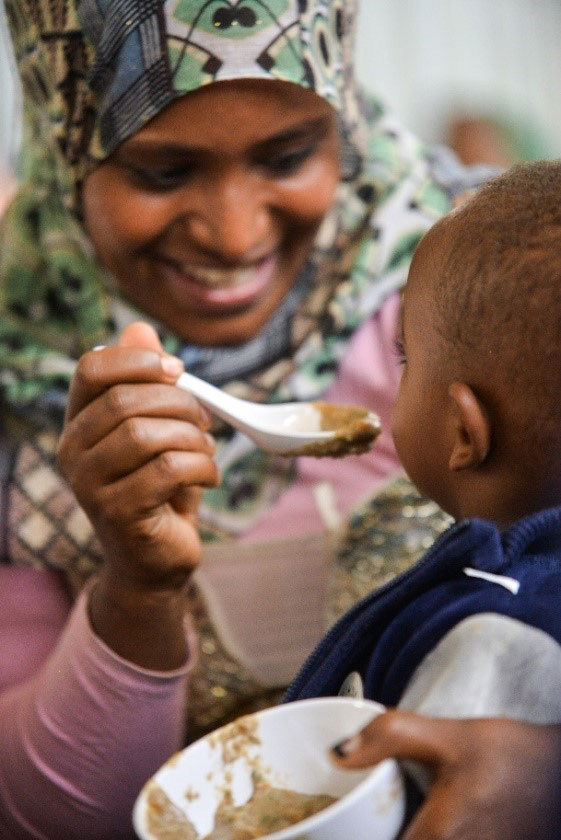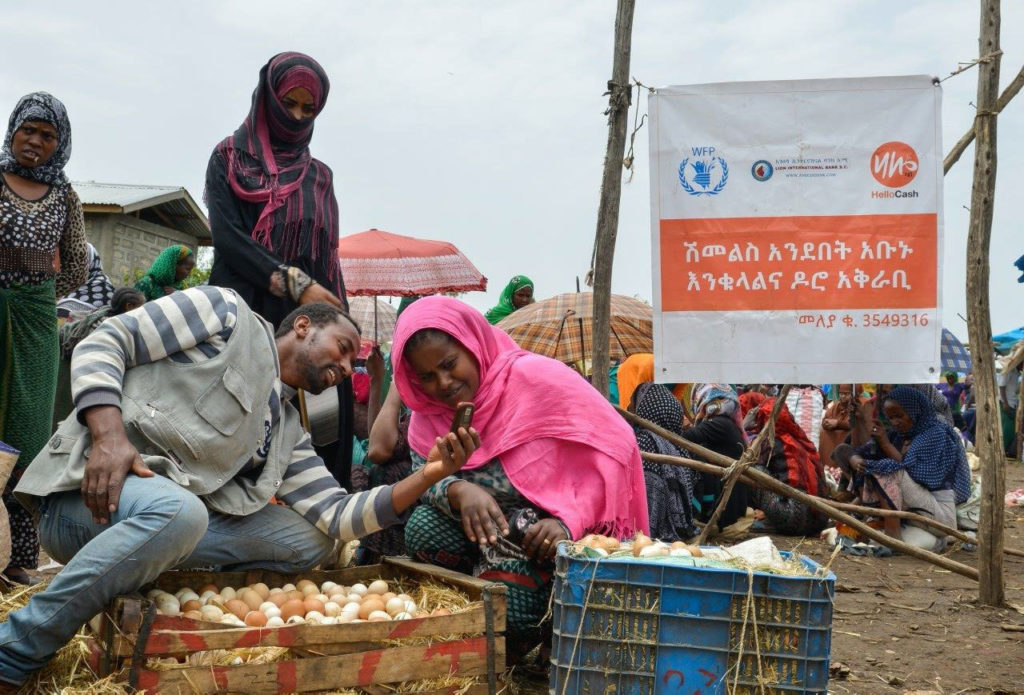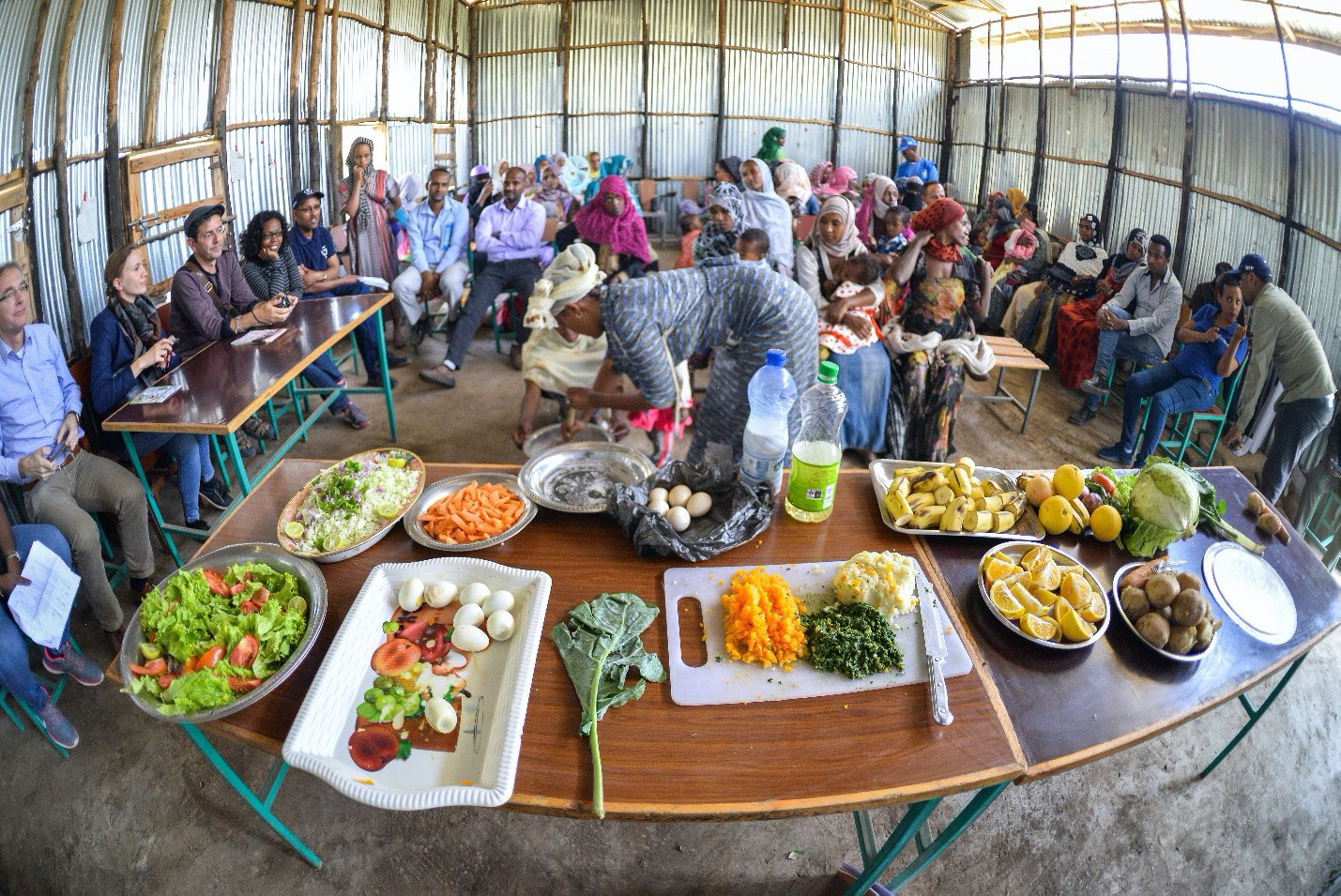At the first N4G Summit in 2013, 110 stakeholders committed to prevent at least 20 million children from being stunted – saving at least 1.7 million lives by 2020. These commitments deliver much-needed action on policy and financing commitments to the Sustainable Development Goal (SDG) 2—Ending Hunger in All its Forms—which is an underlying driver of 12 of the 17 SDGs. As we continue the Nutrition for Growth Year of Action, take a look at how pledges made during the N4G summits in London (2013) and Milan (2017), have brought about positive impacts on global nutrition.
Malnutrition remains a key challenge in Ethiopia, where 37% of children under the age of five are stunted, 21% are underweight and 7% are wasted. Concurrently, overweight and obesity in children and adolescents is increasing. Only 13% of children in Ethiopia consume the minimum acceptable diet1. The United Nations World Food Programme’s Fresh Food Voucher (FFV) initiative is aimed at contributing to a reduction in stunting through improving child and maternal diets and care practices. It targets vulnerable households enrolled in the national social protection programme in Ethiopia’s Amhara region, one of the regions with the highest prevalence of stunting at 43%. The key indicators being monitored are Minimum Acceptable Diet (MAD) and Minimum Diet Diversity for Women (MDD-W).

Every month, in seven districts of the Amhara Region, 27,000 enrolled households receive an e-voucher via SMS on their analogue mobile phone that can be redeemed for fruits, vegetables, and eggs at enrolled food retailers’ kiosks in remote rural markets. The programme trains and provides technical support to the retailers to maximize their profits and increase the safety of their items. Additionally, a Social and Behavioral Change (SBCC) campaign, based on formative research and tailored for the programme, includes one-on-one sessions for health and agriculture extension workers, supported by market theatre performances, radio-based broadcasts, SMS-vocal messaging, and other components, all aligned with Ministry of Health (MoH) guidelines. The ultimate goal is to offer robust evidence to inform policy and programme decision makers, leverage the transfer value and the cost / non affordability of healthy diet analysis, train the Government of Ethiopia MoH in this approach, and apply it to other critical areas of the Ethiopian food system (e.g., what is the optimized healthy diet which has the lowest impact on climate change?).

The programme recently saw children and mothers increasing their diet diversity from 13 to 80%, and 1 to 95%, respectively, despite the COVID-19 pandemic programmatic adjustments.
The initiative can easily be replicated in other contexts, taking into consideration crucial elements, such as: market functionality, including availability of nutrient dense foods; the development of a SBCC strategy well-informed by formative research; and access to mobile phones and network connectivity.
The critical lessons learnt showed need to address not only the ‘access’ (voucher) and the ‘demand/utilization’ (SBCC) of nutrient-dense foods, but also their ‘availability’ (ag-production, processing and supplying) to address the entire food system.

